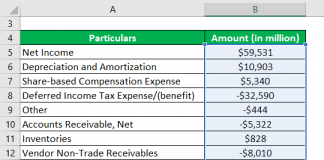Organisations that over-provision spend greater than is important to meet their wants, wasting priceless capital that could presumably be utilized elsewhere. Even if an organisation is already utilising the public Cloud, with out elasticity, hundreds of pounds could be destroyed on unused VMs every year. Scalability and elasticity are sometimes used interchangeably (and wrongly so). While these two processes could sound related, they differ in strategy and style.
This method may be time-consuming and error-prone, often resulting in over or under-provisioning. Cloud monitoring instruments play a crucial role in reaching sufficient cloud elasticity. They monitor resource use and efficiency data, like CPU use, memory use, and community bandwidth. Netflix engineers consistently highlight the utilization of AWS’s elastic Cloud services to handle high volumes of server requests swiftly and with out downtime.
- Both AWS and Azure provide a wide selection of instance sizes, permitting for vertical scaling in cloud computing for EC2 cases and RDS databases.
- The digital market undergoes constant adjustments, making it difficult to stay abreast of the latest technological improvements and breakthroughs that emerge every day.
- To explain elasticity within the cloud, let’s take a glance at the instance of storing and operating an utility in the cloud.
- This dynamic useful resource allocation helps stop service outages and slowdowns, bolstering the reliability of the service and maintaining trust with users.
- Users can have a consistent experience even when resources are routinely provisioned or de-provisioned without disrupting operations.
With cloud elasticity, you presumably can allocate resources automatically based mostly on real-time needs. Managing cloud elasticity is critical for streaming companies, as viewer demand can fluctuate dramatically with content releases or trending occasions. Resources must scale quickly to fulfill the inflow of traffic and preserve a high-quality streaming expertise. However, if not managed properly, the service might provision additional capacity that is still idle once the demand eases, leading to unnecessary prices without corresponding revenue. Or Worse, it could not scale up quickly sufficient, inflicting viewers to expertise downtime or buffering. Accurately predicting and assembly demand is a problem in implementing cloud elasticity.
What’s Scalability In Cloud Computing?
The capacity of a system to handle elevated load by including more sources or making higher use of present resources. The ability to quickly expand or decrease laptop processing, reminiscence, and storage resources to satisfy altering demands. When a well-liked event is being streamed and demand increases, extra sources are automatically allotted to deal with the load. Once the occasion is over and demand decreases, the resources are mechanically lowered.
In this manner, the shortage of Cloud Elasticity can result in lost business and extreme bottom-line impacts. DigitalOcean simplifies cloud computing so builders and companies can spend extra time creating software. From 24/7 support and detailed documentation to transparent pricing and a thriving community, DigitalOcean offers the cloud platform you should scale and handle your applications efficiently. It is completely totally different from what you might have read above in Cloud Elasticity. Scalability is used to satisfy the static needs whereas elasticity is used to meet the dynamic want of the organization. Scalability is an analogous kind of service offered by the cloud the place the shoppers have to pay-per-use.
What Is Cloud Elasticity And Its Role In Cloud Services?
While cloud services can scale resources up and down, the algorithms responsible for this scaling should be finely tuned to reply to utilization patterns. If the prediction fashions are inaccurate, resources may be added too late, resulting in performance bottlenecks, or eliminated too quickly, causing service disruptions. Cloud Elasticity and scalability are related ideas but have distinct differences. Scalability usually refers again to the ability of a system to deal with a growing amount of work, often by adding extra sources. On the opposite hand, Cloud Elasticity goes further by permitting for the automatic adjustment of sources based on demand in real-time.
Synopsys helps you protect your bottom line by building trust in your software—at the pace your corporation demands. Synopsys is a quantity one provider of electronic design automation options and services. Perhaps your clients renew auto insurance policies at around the identical time yearly. Under-provisioning refers to allocating fewer sources than you use. The versatility is completely relying upon the climate as once in a while it might turn out to be adverse attribute where execution of sure applications probably ensured execution.
Interested to study extra about cloud computing and server-less computing? Read our article “What is Serverless Computing and Why is it Important.” If you wish to enhance your cloud computing expertise further, we’d highly suggest you to verify Simplilearn’s Post Graduate Program in Cloud Computing. This program, in collaboration with Caltech CTME, can help you hone the proper cloud computing abilities and make you job-ready very quickly. It is used quickly to deal with sudden will increase in demand or seasonal demands.
Expertise The Pliability Of The Cloud With Digitalocean
One of our coaching specialists shall be in touch shortly to go overy your training requirements. Fill out your training details under so we’ve a better thought of what your coaching requirements are. One of our training experts https://www.globalcloudteam.com/difference-between-scalability-and-elasticity-in-cloud-computing/ shall be in touch shortly to go over your coaching necessities. Our Cloud Computing covers a variety of subjects associated to PRINCE2, offering priceless assets, best practices, and business insights.
On the opposite hand, cloud scalability is a system’s capability to extend or lower sources, usually extra deliberately, to accommodate growth or lower demand. The most significant benefit of cloud elasticity is value efficiency. This helps them save money on infrastructure prices and pay just for the resources they use.
Challenges In Cloud Elasticity
It’s an important a part of cloud services that helps add or remove sources as needed, guaranteeing cost effectivity and consistent performance. When demand increases, cloud providers can add extra resources, like digital machines, to handle the workload. This dynamic method helps maintain a constant person experience and helps better capacity planning. Cloud Elasticity refers again to the ability of a cloud computing environment to dynamically allocate and deallocate sources primarily based on demand. This is essential for companies as a outcome of it allows them to scale their infrastructure up or down in response to various workloads. With Cloud Elasticity, organisations can optimise resource utilisation, enhance efficiency, and handle prices more effectively by only paying for the assets they actually use.

Thus, flexibility comes into image where further property are provisioned for such application to meet the presentation conditions. Implementing Cloud Elasticity requires adjustments to present Cloud or on-premises deployments. This might introduce a learning curve delay as newly acquired expertise familiarises themselves with new environments, languages, and the automation tools and processes that want implementation.
In right now’s quick digital world, apps can see sudden changes in visitors or workloads. Traditional systems can’t take this, leading to downtime or poor performance. With cloud elasticity, developers can change sources primarily based on precise wants.
Firms can significantly scale back prices with elastic computing, as they not must put cash into costly IT tools and solely pay for what they use. Any essential infrastructure and providers for a corporation may be promptly supplied with Cloud providers. Given that scalability is a fundamental aspect of Cloud deployments, efficiency is enhanced, guaranteeing fast computational pace. Without Cloud Elasticity, organisations would need to pay for unused capacity more usually than not and handle and maintain that capacity with OS upgrades, patches, and component failures.
He has a MBA degree from the Haas School of Business, UC Berkeley and a MSEE from the University of Houston. Scaling up or out retains the applying or chip design project from slowing down due to a lack of resources. Scaling down the infrastructure statically supports a smaller environment when you do not need the sources.
So, in conclusion, we can say that Scalability is beneficial the place the workload stays excessive and increases statically. Where IT managers are prepared to pay only for the length to which they consumed the assets. Elasticity works by monitoring the load on a system and automatically adjusting assets as needed.
Cloud elasticity, on the other hand, refers to the ability of a system to stay operational and responsive throughout fast and/or unexpected spikes in person demand. Elasticity is a tactical action that ensures uninterrupted access, even throughout utilization peaks. Cloud elasticity has become important for web developers in managing their purposes and sources.
SaaS corporations usually see a spike in utilization following product launches or major updates. Cloud elasticity enables these businesses to scale their infrastructure resources to fulfill the surge in person exercise with out over-provisioning hardware that may become underutilized post-launch. This prevents performance degradation throughout important intervals and aligns operational prices with precise utilization. Cloud elasticity instantly helps this goal by guaranteeing that additional resources are all the time able to be deployed in response to increased demand. This dynamic resource allocation helps stop service outages and slowdowns, bolstering the reliability of the service and sustaining trust with customers. Automating scaling actions inside cloud platforms like DigitalOcean, AWS, and Google Cloud reduces the executive overhead for IT departments.
Benefits And Limitations Of Cloud Elasticity
Users can have a constant expertise even when assets are mechanically provisioned or de-provisioned with out disrupting operations. This type of scalability is best-suited when you experience elevated workloads and add resources to the existing infrastructure to improve server performance. If you’re looking for a short-term solution to your immediate wants, vertical scaling may be your calling. Using elasticity in cloud computing helps allocate sources efficiently, save your money, and simply scale up or down. You can enjoy the professionals of getting efficiency whenever you need it, making your cloud expertise better than ever. Cloud elasticity mechanically adjusts cloud assets to match demand, guaranteeing effectivity and savings.
Grow your business, transform and implement technologies based on artificial intelligence. https://www.globalcloudteam.com/ has a staff of experienced AI engineers.






























